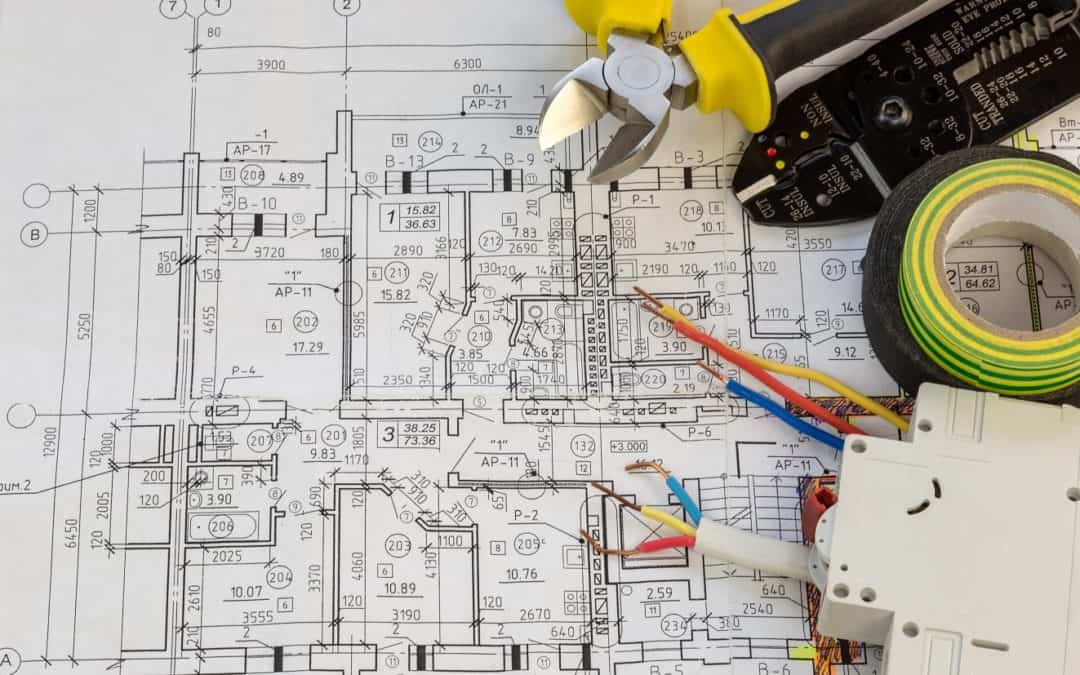Specialized Electrical Engineering Design Services for Residential and Industrial Needs
Specialized Electrical Engineering Design Services for Residential and Industrial Needs
Blog Article
Cutting-edge Electric Design Solutions for Modern Facilities
The evolution of modern infrastructure necessitates cutting-edge electrical design solutions that not just boost functional effectiveness yet additionally address sustainability challenges. As metropolitan atmospheres grow increasingly complicated, incorporating modern technologies such as smart grids and sustainable energy sources becomes extremely important. These innovations not just promise to optimize power usage but likewise foster durability against future needs. Nevertheless, the landscape of electrical design is undertaking fast change, motivating a better evaluation of emerging fads and their effects for long-lasting infrastructure feasibility. What might the future hold for those who welcome these ingenious approaches?
Relevance of Innovative Electrical Design
Ingenious electric design plays an essential duty in modern-day facilities, affecting not only efficiency but likewise sustainability. As cities advance and the demand for power increases, the requirement for advanced electric systems becomes critical. These systems have to not only satisfy current needs but also anticipate future growth and technological innovations.
A well-executed electric design can significantly reduce energy intake, consequently reducing functional prices and decreasing environmental influence. By including renewable resource resources, such as solar panels and wind generators, ingenious styles can enhance power freedom and resilience. In addition, wise grid technologies permit real-time surveillance and administration of energy distribution, maximizing performance and lowering waste.
Security is another essential element of electric design. Executing extensive criteria and advanced innovations can mitigate risks related to electrical failings, ensuring a safe setting for companies and citizens alike. In addition, ingenious designs help with versatility, permitting facilities to incorporate arising modern technologies perfectly.
Secret Fads in Electric Design
As the landscape of electrical design proceeds to progress, several essential patterns are forming the future of the industry. One significant fad is the integration of wise modern technology right into electric systems. The proliferation of the Web of Points (IoT) has allowed real-time monitoring and control of electrical tools, enhancing effectiveness and promoting anticipating maintenance.
One more pattern is the growing focus on modular design. This approach enables for adaptable and scalable remedies, enabling infrastructure to adapt to altering requirements without substantial renovations. Additionally, the usage of advanced simulation tools and Structure Details Modeling (BIM) is becoming progressively common, simplifying the design procedure and boosting partnership amongst stakeholders.
In addition, developments in materials scientific research are bring about the growth of lighter, more sturdy, and energy-efficient parts. This technology is especially essential for high-performance buildings and infrastructure tasks.
Last but not least, there is a significant change in the direction of data-driven decision-making - residential electrical design. Leveraging data analytics assists developers enhance systems for efficiency and cost-effectiveness. With each other, these patterns represent a transformative period in electric design, enhancing performance, sustainability, and resilience in modern-day framework
Lasting Power Solutions
Sustainable power services are significantly ending up being an essential emphasis in electrical design, showing a more comprehensive commitment to ecological duty and resource performance. These services aim to decrease environmental effect while maximizing energy usage in different infrastructures, from household buildings to click here for more info huge business facilities.
One of the leading methods involves the assimilation of eco-friendly energy sources, such as photovoltaic panels and wind turbines, into electrical systems. This not only reduces reliance on fossil gas but additionally enhances energy durability. Additionally, ingenious power storage space systems, such as innovative batteries, enable effective administration and circulation of energy, making certain that excess energy produced throughout peak production can be used during high need durations.
Moreover, energy-efficient design methods are being taken on to enhance total system efficiency. This consists of utilizing energy-efficient lighting, cooling and heating systems, and wise structure technologies that check and adjust power use based on occupancy and environmental problems.
Smart Grid Technologies
The application of sustainable power remedies normally causes the exploration of smart grid technologies, which play a crucial duty in improving electrical systems. Smart grids leverage advanced communication modern technologies and information analytics to enhance the reliability, efficiency, and sustainability of electrical power circulation. By incorporating digital innovation with traditional grid infrastructure, these systems facilitate real-time tracking, automated control, and improved decision-making capabilities.
Among the vital attributes of clever grids is their ability to accommodate renewable resource sources, such as solar and wind power. This flexibility not just decreases dependency on fossil gas but also permits for an extra decentralized energy manufacturing model. Furthermore, clever grids enable demand feedback programs, where customers can adjust their power industrial electrical design use based upon real-time pricing, thereby advertising power conservation and decreasing peak load demands.
Additionally, wise grid technologies boost grid resilience by making it possible for quicker identification and resolution of blackouts, eventually reducing downtime. With anticipating maintenance and analytics, energies can enhance and optimize procedures solution delivery. As cities and neighborhoods remain to advance, clever grid technologies are crucial for building a lasting and effective electric facilities that satisfies the needs of modern culture.

Future-Proofing Framework
To guarantee long-lasting viability and flexibility, future-proofing facilities is necessary in the swiftly developing landscape of electric design services. As modern technology advancements and power needs shift, it is critical that electrical systems are made with adaptability in mind. This involves integrating scalable solutions that can fit future upgrades without necessitating extensive overhauls.

Additionally, sustainability needs to be a cornerstone of future-proofed styles. Making use of eco-friendly energy resources, such as solar and wind, and optimizing energy efficiency reduce reliance on nonrenewable fuel sources, aligning with global initiatives to fight environment adjustment.
Verdict
In verdict, innovative electrical design solutions play a crucial function in forming modern-day facilities. By prioritizing versatility, performance, and sustainability, these solutions resolve the evolving demands of power systems. The combination of wise grid modern technologies and lasting power services improves durability and lowers functional costs. Future-proofing framework via innovative simulation devices and modular techniques makes sure that electric systems stay receptive to altering needs, eventually adding to a much more energy-independent and sustainable future.
A well-executed electrical design can substantially decrease energy intake, thus lowering functional expenses and decreasing environmental influence. By integrating renewable power resources, such as solar panels and wind generators, innovative layouts can improve power freedom and durability. Additionally, cutting-edge power storage space systems, such as advanced batteries, make it possible for efficient monitoring and circulation of power, making sure that surplus power generated during top manufacturing can be used throughout high need durations.
Smart grids allow demand action programs, where customers can change their power usage based on real-time prices, thus promoting power conservation and minimizing peak load demands. (electrical engineering design services)
As modern technology advancements and power needs change, it is critical that electrical systems are created with adaptability in mind.
Report this page